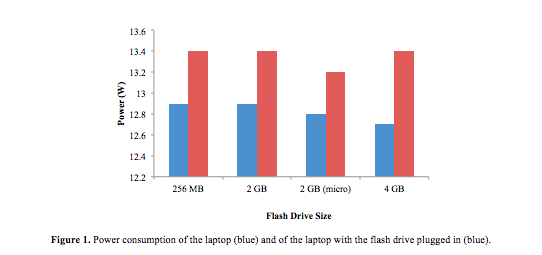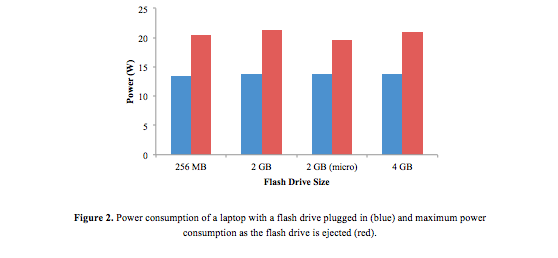For our research project, we attempted to measure the counts of radiation in academic buildings around campus using a Geiger Müller (GM) tube attached to a LabQuest 2. We were also interested in seeing if the radiation levels observed correlated with the ages of the buildings tested. This is an important type of testing to do, as over-exposure to radiation, especially ![]() particles, which are high energy photons without mass, can lead to negative results. These can include radiation poisoning, as well as cancer and other genetic mutations. To conduct our research, we walked around each of the buildings at a steady pace for 5 minutes, moving the GM tube from side to side. When there was an indication of possible radiation contamination, the tube was focused on that area to determine if there was a higher radiation count. For example, there are areas in Olmstead that have radiation warnings on the door, and we stopped and waved the Geiger tube there for a considerable amount of time to test for any radiation contamination that may have been leaking through.
particles, which are high energy photons without mass, can lead to negative results. These can include radiation poisoning, as well as cancer and other genetic mutations. To conduct our research, we walked around each of the buildings at a steady pace for 5 minutes, moving the GM tube from side to side. When there was an indication of possible radiation contamination, the tube was focused on that area to determine if there was a higher radiation count. For example, there are areas in Olmstead that have radiation warnings on the door, and we stopped and waved the Geiger tube there for a considerable amount of time to test for any radiation contamination that may have been leaking through.
Figure 1. The apparatus used for recording radiation. The GM tube is located on the right. It is a gas filled detector, which functions using a low-pressured inert gas to amplify the signal of any radiation entering the tube. Radiation passes through the gas in the device and the molecules in that gas are ionized, leaving positive and negative ions in the chamber. These ions move toward separate charged sides (the anode and cathode), creating a current which is then sent through the wire to the LabQuest 2 Device to be measured and recorded. Each ![]() ,
, ![]() , or
, or ![]() particle entering the tube is measured as one “count” of radiation.
particle entering the tube is measured as one “count” of radiation.
|
Average (Counts/0.1 Min) |
Max (Counts/0.1 Min) |
Age |
|
|
Aula |
1.94 |
5 |
1890 |
|
Blodgett Hall |
1.54 |
4 |
1929 |
|
Chicago Hall |
1.86 |
6 |
1959 |
|
Kenyon |
1.28 |
5 |
1933 |
|
Library |
1.98 |
6 |
1905 |
|
Mudd Chemistry |
1.16 |
5 |
1984 |
|
Old Observatory |
1.62 |
5 |
1865 |
|
OLB |
1.34 |
4 |
1872 |
|
Olmstead |
1.36 |
5 |
1972 |
|
Rocky Hall |
2.38 |
6 |
1897 |
|
Sanders English |
1.94 |
4 |
1909 |
|
Skinner Hall |
2.44 |
7 |
1932 |
|
Swift Hall |
1.58 |
4 |
1900 |
|
Background |
1.32 |
3 |
– |
Figure 2. Table of Average and Maximum radiation counts as compared with the age of the building. As read from left to right, the columns are labeled as (1) the buildings tested, with “Background” representing the data we collected between buildings to determine an average radiation level, (2) the average count of radiation observed in each building (per 0.1 of a minute over the course of 5 minutes), and (3) the highest amount of radiation observed in each building, and the age of the buildings that we observed. We initially hoped to be able to distinguish ![]() ,
, ![]() , and
, and ![]() radiation from each other, but upon further review, we determined the only types of radiation we were likely to detect were
radiation from each other, but upon further review, we determined the only types of radiation we were likely to detect were ![]() and high energy
and high energy ![]() . This is because these travel further from their source than
. This is because these travel further from their source than ![]() , and are generally emitted by the same type of material.
, and are generally emitted by the same type of material.
Figure 3. The average radiation counts compared with the age of the buildings. A trend line has been plotted to show the direction of correlation.
Figure 4. The maximum radiation counts compared with the age of the buildings tested. A trend line has been plotted to show the direction of correlation.
We plotted the above data observed in two graphs (Figures 3 & 4). Figure 3 shows the average radiation levels by the year that the building was built, while figure 4 shows the maximum radiation level observed by the year the building was built. As you can see, there is little to no association between the variables in either figure (figure 3: r=0.275, r²=0.076; figure 3: r=0.228, r²=0.052, where the “r” value indicates the closeness of correlation of the data, and the r² value indicates the percent of data that fits within that correlation).
The literature provided by Vernier, the makers of M tube and the LabQuest 2 device, states that expected background radiation levels should be between between 0-2.5 counts of radiation/0.1 min. Our average background radiation testing was within this range (avg=1.32 counts/0.1 min, max=3 counts/0.1 min). All of the average readings from buildings were also within this range (the highest average being taken in Skinner Hall: 2.44). With this information, we can conclude that Vassar campus is safe in terms of radiation levels.




